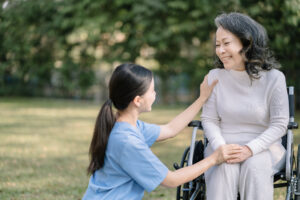Introduction
In moments of situation, having the ideal equipment can suggest the distinction between life and fatality. Cardiopulmonary resuscitation (CPR) is an essential skill that everybody must learn, especially given that it can conserve lives throughout emergencies. This is especially true in Australia, where sudden heart events, drowning events, and sports-related heart attacks are unfortunately common. Past recognizing exactly how to perform Tweed Heads First Aid classes available mouth-to-mouth resuscitation, comprehending what important mouth-to-mouth resuscitation tools you should carry hand is similarly crucial. This article explores the critical tools and equipment required for efficient CPR methods in Australia.
Essential mouth-to-mouth resuscitation Tools in Australia: What You Ought to Have on Hand
When it concerns lifesaving steps like mouth-to-mouth resuscitation, having the best tools easily offered is an outright necessity. The adhering to items are essential for anybody looking to be prepared for emergency situations:
1. Automated Outside Defibrillator (AED)
An AED is a portable gadget that can assess heart rhythms and provide an electrical shock if needed. It's crucial in cases of abrupt heart arrest.
- Benefits of AEDs: Quick accessibility to an AED substantially increases survival rates. Where to Locate AEDs: Numerous public locations in Australia are furnished with AEDs, consisting of mall and schools.
How to Utilize an AED? Using an AED is straightforward:
Turn on the device. Attach pads to the person's bare chest. Follow voice triggers for analysis and shock delivery.2. Mouth-to-mouth Resuscitation Masks and Barriers
These devices secure both the rescuer and target during mouth-to-mouth resuscitation.
- Types of Masks: Pocket masks with one-way valves are preferred choices.
3. First Aid Kit
A detailed emergency treatment package need to have standard clinical supplies like bandages, bactericides, handwear covers, and scissors.
- Contents of a Great First Aid Kit: Adhesive bandages Sterile gauze pads Antiseptic wipes Disposable handwear covers
4. Individual Safety Equipment (PPE)
Gloves, masks, and face guards shield versus infectious illness throughout resuscitation efforts.
5. Training Manikins
Manikins are important for practicing CPR methods effectively and accurately.
- Importance of Practice: Normal training makes certain preparedness when real emergency situations occur.
6. Online Resources for Training
Accessing online programs can help acquaint on your own with both mouth-to-mouth resuscitation methods and the most up to date guidelines.
Understanding CPR Techniques
Knowing just how to execute CPR successfully can considerably affect its success rate:
7. How to Do CPR?
CPR entails breast compressions and rescue breaths:
- Compression Depth: The right compression deepness for adults is about 5-6 cm.
Table: Compression Deepness Guidelines
|Age|Compression Depth|| ------------------|------------------|| Grownups|5-6 centimeters|| Kids (1-8)|4-5 centimeters|| Babies (<< 1 year)|3-4 cm|</p>
8. Baby CPR Technique
This method varies significantly from adult procedures due to the fragility of babies:
- Use 2 fingers for compressions at a depth of regarding 3-4 cm.
9. Advanced Resuscitation Skills
For doctor or those pursuing sophisticated training, abilities such as intubation or IV therapy may be necessary.
Special Scenarios in CPR
Certain scenarios need adjusted techniques or additional factors to consider:

10. Sports-Related Heart Arrests
Athletes may experience heart events in different ways due to physical exertion.
11. Drowning Victims
CPR techniques might need adjustment based upon water breathing impacts:
- Focus on rescue breathing before upper body compressions.
Household mouth-to-mouth resuscitation Readiness
Being prepared in your home can conserve lives throughout emergency situations:
12. Developing a Family Emergency Plan
Discuss emergency methods with family members regularly.
13. Saving Necessary Equipment
Keep your emergency treatment package, AED, and various other essential equipment easily accessible at home.
Workplace Emergency situation Plans
Every work environment need to have a clear approach regarding cardiac emergencies:
14. Establishing Workplace Guidelines
Establish clear procedures for employee to adhere to throughout an emergency scenario involving heart arrest.
Local Resources for Training and Certification
Taking action starts with education and learning:
15. Regional Mouth-to-mouth Resuscitation Classes in Australia
Many companies supply classes customized to various target markets-- be it moms and dads or medical care professionals.
List of Organizations Offering Classes
- St John Ambulance Red Cross Australia
16. On-line Mouth-to-mouth Resuscitation Accreditation Courses in Australia
Online alternatives make it much easier than ever to discover essential lifesaving abilities at your very own pace.
CPR Training Tweed HeadUnderstanding Certification Validity
Keeping your abilities present is just as crucial as recognizing them at first:

17. Mouth-to-mouth Resuscitation Certification Validity in Australia
Most accreditations need revival every three years; check private course requirements for details.
FAQs
Q1: Just how often must I freshen my mouth-to-mouth resuscitation training?
It's suggested to revitalize your abilities each to two years because of updates in standards or techniques.
Q2: Can anybody do CPR?
Yes! Any individual can do hands-only mouth-to-mouth resuscitation regardless of their qualification status; nonetheless, skilled people will certainly be a lot more effective.
Q3: What's the distinction between adult and infant CPR?
The main distinction depends on compression depth and method used; adult compressions are deeper than baby compressions due to size differences.
Q4: Do I need special devices for executing baby CPR?
Not necessarily-- typical first aid sets are enough; nonetheless, expertise concerning appropriate techniques is crucial.
Q5: Is it needed to make use of rescue breaths throughout CPR?
While hands-only compression has been shown efficient for adults experiencing out-of-hospital heart attacks, rescue breaths continue to be critical throughout details scenarios like sinking occurrences or pediatric emergencies.
Q6: Where can I locate regional courses or qualification options?
Examine recreation center or companies like St John Ambulance or Red Cross; they often offer classes throughout Australia!
Conclusion
Being prepared with essential CPR equipment not only empowers people however also promotes a neighborhood prepared to respond successfully during emergency situations. With resources available throughout Australia-- from neighborhood courses to on the internet accreditations-- there's no justification not to equip on your own with these lifesaving skills. Remember that finding out exactly how to do effective mouth-to-mouth resuscitation means being positive concerning safety and security-- not just for ourselves but also for those around us that could eventually count on our readiness during a minute of crisis!